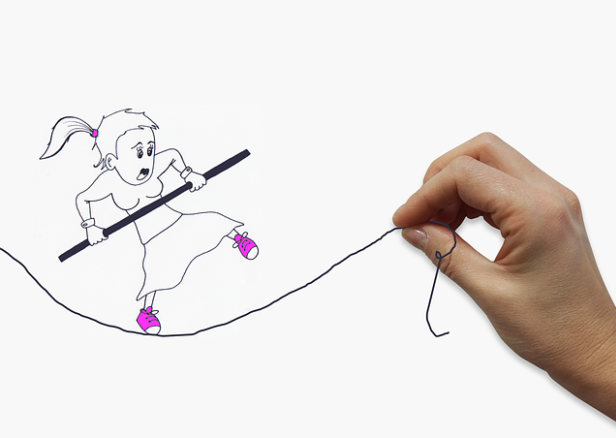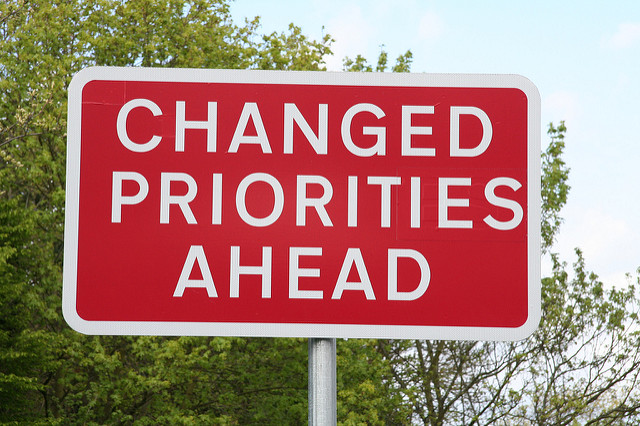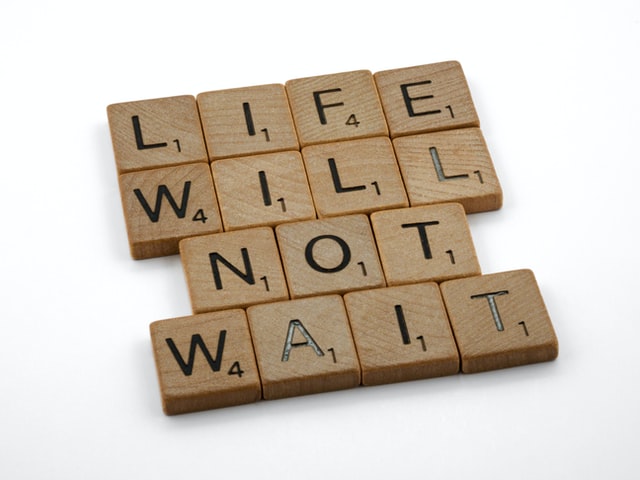Balance is Bullshit

I’ve asked quite a number of leaders whether there is such a thing as work-life balance. Almost everyone says no without hesitation. They agree there are times we’re present, we’re grounded, we’re in sync with what matters, and we’re in the zone—feeling all the joyous personal and professional satisfaction we’re looking for. Yet, it’s as though the second we become aware of it, the experience disappears. Additionally, balance looks different for every individual. For most leaders, balance becomes work-life integration, with the ability to work at any time while having flexibility for family and personal activities throughout the day. Most leaders I know take this path: they bring their work home and bring their home to work.
It’s easier for most of us to recognize when we’re out of sync because when we’re too far off kilter, we feel it. The moment you recognize it, say to yourself, “Wait a second, let me slow down,” stop, breathe, and address it directly. Ask yourself what you need to let go of, what you need to say no to, what you need to start or stop doing so you can get back in sync right now.

When you’re out of sync, there’s a choice to make. Like most people, I have an inordinate number of things I believe I should be doing to be a good friend, to be a good sister, to be a good daughter in law, to be a good mom, to be a good businesswoman, to be a good wife. We all have competing priorities, and we need practices to help us pause to say, “Yes, it can all be done, just not all at once. You can have it all, just not all at the same time.”
THE PRICE OF YES
Prioritization means we need to say no to things. When someone asks you if you want to do something, do you have a hard time saying no, even if it means rearranging your existing plans? For most of us, when we say no, it’s inevitably followed by a long explanation because we’re feeling guilty. Many years ago, during a program I was participating in, we were asked to invent a new practice, and I thought, I can’t do one more thing right now. I had so much on my plate personally and professionally I couldn’t see a way to add another thing.
So I invented a practice to decline new commitments, which was about learning to say no. It ended up being really tough; my knee jerk response when asked to do things is to say yes because I really enjoy new things and it’s automatic for me. The trouble with saying yes to something is that, often, it isn’t just one yes; it’s a whole cascade of yesses you’re committing to without realizing it.

LEARNING TO SAY NO
Every time you say yes to something, you’re also saying yes to much, much more—but how often do you stop to consider all that your first yes entails in terms of time, work, and commitment? Try this: When someone asks you to take on a new responsibility or job, don’t be too quick to say yes. Instead, tell them you’ll consider it and when you’ll get back to them. Then take the time to sit down with a pad and pencil and list all those additional things you’re taking on by saying yes. Take your time, and write them all down.
If you look at your list and realize that all of those yesses add up to more than you’re willing to commit to, you can say no with a clear conscience and without hesitating. If you’re determined to find balance in your life between what you must do, versus what others would like you to do, this is a powerful place to start.

HANGING ON TO WHAT MATTERS: VALUES DRIVING PRIORITIES
The one place we need consistency is in living our values. When we’re coming from our values, we spend our time doing what matters and we’re at our best. When we’re misaligned with our values, life doesn’t work, we’re out of sync, and we feel uncomfortable. One way to keep your priorities aligned with your values is through the practice of calendaring. Calendaring means asking yourself the following; What matters most to you? Does the way you spend your time reflect your priorities? This exercise will help you to put your concentration into the areas of your life that are most important to you.
-
List the three to five areas in your life that are critical to your happiness. They might include family, health, career, spirituality, community, relationships, learning, and recreation, but they can be anything, as long as they are priorities for you.
-
Next, take a blank set of calendar pages and jot down your vision of an ideally balanced life. Imagine it. Don’t edit, just set up a life you’d wake up to every day, excited to live.
-
Now, print out your actual calendar for the same number of months you used for your “ideal” calendar in step 2 and compare the two calendars. How does what you actually do on a day-to-day basis compare with your “ideal” calendar? Where are the biggest gaps? What’s included? What’s excluded?
-
Write down the first step you need to take to realize a life that is more reflective of your “ideal” calendar.
-
Begin immediately; especially if you find your ideal and reality are worlds apart.
Balance is What You Decide it is
The word balance is bantered about in self-help books and health magazines all the time, as if it’s a destination we are all seeking. Yet I haven’t met anyone who lives there. It’s an illusion. We need to give up the pursuit of such an unrealistic Zen where all areas of our life are in perfect equilibrium. It’s not that it doesn’t exist; it’s fleeting, often accidental, and definitely impermanent. Simply said, we visit that impeccable state, realize it—and life happens. The Zen slips just beyond our fingertips again. The trick is defining what balance means for you. Visiting that Zen more consistently means learning to slow down, intentionally choosing what to say yes and no to, based on your values, and delegating what you don’t enjoy and aren’t good at, while spending more time doing what you love and are great at. Simple? Yes. Easy? No.
This guest post was authored by Sue Hawkes




